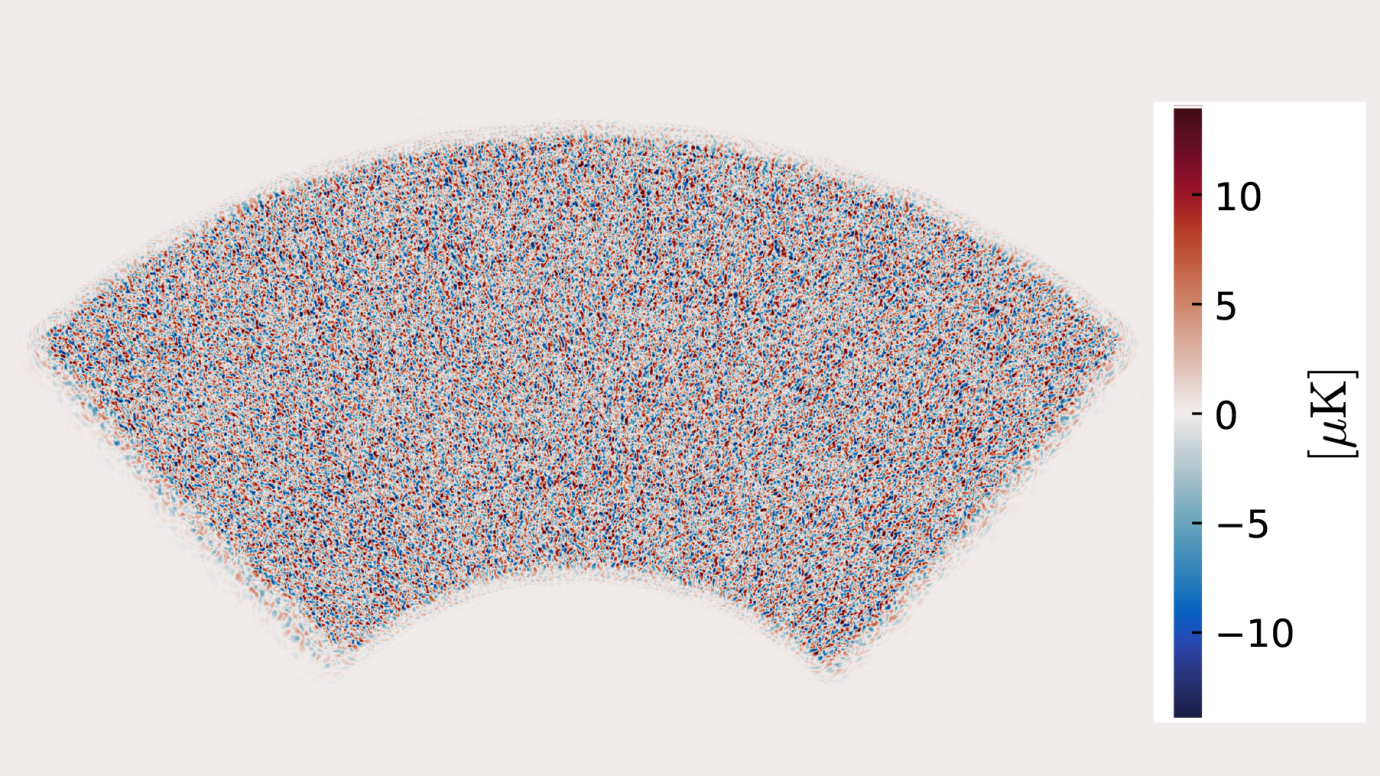The Cosmic Microwave Background (CMB) is the first light that was able to freely move across the Universe. Released around 400,000 years after the Big Bang, it is a map that has been used by astronomers to understand the cosmos. To see it in full you have to go to space, measuring it all across the sky, like the Planck satellite. From different locations on Earth, you get portions of it, but you can get more detail than from space – as new work has done.
Astronomers using the South Pole Telescope (SPT) performed high-precision measurements of the CMB. In a paper that has not yet been peer-reviewed, they measured the polarization of this light. Light waves are oscillations of electric and magnetic fields, and these oscillations can happen in any direction perpendicular to the direction the light is traveling. When light is polarized, the oscillations instead happen in one specific direction. This wiggling light is behind 3D glasses: light with two polarizations is projected on the screen but the right and left lenses of the glasses let only one type of polarized light.
When it comes to the CMB, polarized light allows us to learn even more about what the universe was like when this light was emitted.
This sharpens the Hubble tension, at least with the most widely accepted local measurements
Professor Tom Crawford
“Almost all of our cosmological constraints come from the CMB, mostly from data from the Planck Satellite. But the Planck constraints are almost all from the information encoded in the fluctuations in total intensity of the CMB, whereas the recent SPT measurement only uses information from the polarization (or ‘wiggling direction’) of the CMB. In that way the new SPT constraints are nearly independent of the Planck results and thus provide a key test of those results,” study co-author University of Chicago Research Professor Tom Crawford told IFLScience.
In the first method, using data from the CMB, scientists worked out that the universe is expanding at a rate of 67.4 kilometers per second per megaparsec, with 1 megaparsec being 3.26 million light-years. This means that if two galaxies are 1 megaparsec apart, the expansion of the universe would make them look like they are moving away from each other at a speed of 67.4 kilometers (42 miles) per second.
The second method instead works this out by measuring the distance of local galaxies from us and how fast they appear to be receding due to the expansion of the universe. This method gets 73 kilometers per second per megaparsec.
The uncertainties on these two methods are small and don’t overlap, hence why it is a tension. The observations from the SPT agree with the Planck data.
“Because the SPT results are independent of Planck, they could have landed anywhere in the range of ‘agreeing with Planck’ to ‘agreeing with the local measurements,’ and they landed right on top of Planck. This sharpens the Hubble tension, at least with the most widely accepted local measurements,” Professor Crawford told IFLScience.

Image Credit: courtesy Ge et al
Are one or both camps underestimating their uncertainties, and the values only seem to be different? Or is there something wrong with our model of the universe? We do not know what the solution here is – but follow-up observations are crucial. This is why this work was incredibly important and the SPT was crucial for it.
“The South Pole is the best site on Earth for making deep, low-noise observations of the CMB, and SPT-3G, the current camera on the SPT, is the most powerful high-resolution CMB camera currently operating. It is only with the level of depth we achieved in this result (and by using new analysis techniques that maximize the information we can squeeze from the data) that we are able to produce cosmological constraints from polarization only that are competitive with results from the total intensity of the CMB,” Professor Crawford told IFLScience.
The paper has been submitted to the journal Physical Review D and is available as a preprint on the ArXiv.
Source Link: New Cosmic Microwave Background Measurements Sharpen Puzzling "Hubble Tension"